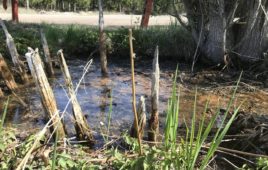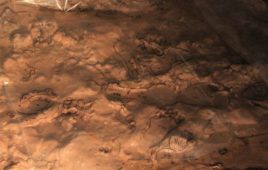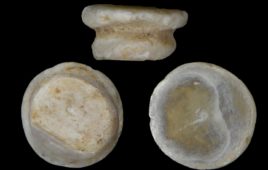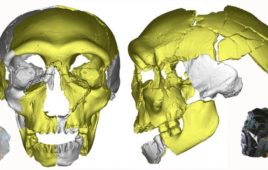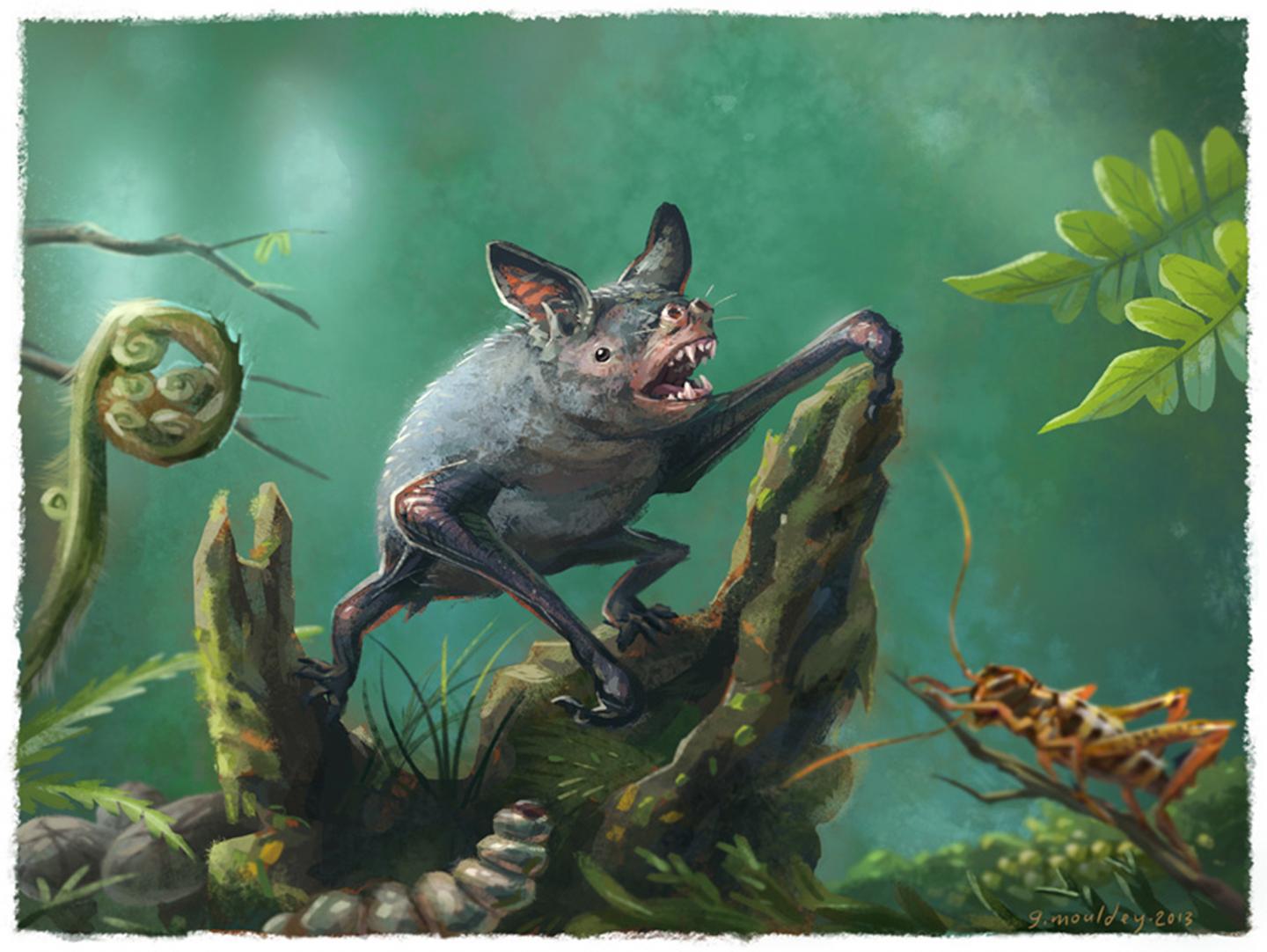
An artist’s impression of a New Zealand burrowing bat, Mystacina robusta, that went extinct last century. The new fossil find, Vulcanops jennyworthyae, that lived millions of years ago in New Zealand, is an ancient relative of burrowing or short-tailed bats. Credit: Illustration by Gavin Mouldey.
The fossilized remains of a giant burrowing bat that has been extinct for millions of years has been found in New Zealand.
A team led by scientists from the University of New South Wales (UNSW) found the teeth and bones of a bat—estimated to be about three times the size of an average bat today—from sediments dating back to 16-to-19 million years ago near the town St. Bathans in Central Otago on the South Island of New Zealand.
“The fossils of this spectacular bat and several others in the St Bathans fauna show that the prehistoric aviary that was New Zealand also included a surprising diversity of furry critters alongside the birds,” Trevor Worthy, an associate profess at Flinders University and co-author of the study, said in a statement.
Burrowing bats are only found in New Zealand at the present time, but they previously also lived in Australia. The bats not only fly, but also scurry on all fours over the forest floor, under leaf litter and along tree branches, while foraging for both animal and plant food.
“New Zealand’s burrowing bats are also renowned for their extremely broad diet,” study first author and UNSW professor Sue Hand said in a statement. “They eat insects and other invertebrates such as weta and spiders, which they catch on the wing or chase by foot.
“And they also regularly consume fruit, flowers and nectar,” she added. “However, Vulcanops’s specialized teeth and large size suggest it had a different diet, capable of eating even more plant food as well as small vertebrates—a diet more like some of its South American cousins. We don’t see this in Australasian bats today.”
The researchers estimate that the fossils belong to a nearly 40-gram bat, representing the largest burrowing bat ever found. The findings also represent the first new bat genus to be added to New Zealand’s fauna in more than 150 years.
“Burrowing bats are more closely related to bats living in South America than to others in the southwest Pacific,” Hand said. “They are related to vampire bats, ghost-faced bats, fishing and frog-eating bats, and nectar-feeding bats, and belong to a bat superfamily that once spanned the southern landmasses of Australia, New Zealand, South America and possibly Antarctica.”
Around 50 million years ago, these landmasses were connected as the last vestiges of the southern supercontinent Gondwana. However, global temperatures were up to 12 degrees Celsius higher than they currently are and Antarctica was forested and frost-free.
With subsequent fragmentation of Gondwana, cooling climates and the growth of ice-sheets in Antarctica, Australasia’s burrowing bats became isolated from their South American relatives.
The bat has been dubbed Vulcanops jennyworthyae, after team member Jenny Worthy who found the bat fossils, and after Vulcan, the mythological Roman god of fire and volcanoes, in reference to New Zealand’s tectonic nature, but also to the historic Vulcan Hotel in St Bathans.

